How To Draw Clothes Step By Step
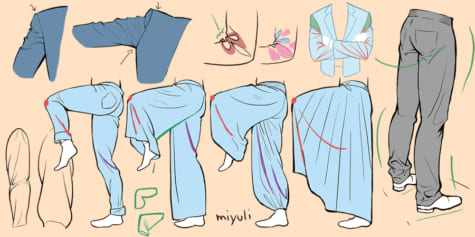
Cloth and folds can take all sorts of forms depending on the softness of the material and the shape of the body. This illustrated tutorial by comic artist miyuli covers basic concepts and approaches for drawing fabrics of all kinds.
Folds depend on the course they fall on. They are non universal. There are many unlike types and factors that influence them.
There is no single rule on how to draw folds—The best way to sympathise drapery is to do as many studies of folds as you can. The more realistic you want to draw and paint folds, the more references you will need. Agreement some mutual principles will make it possible to draw them convincingly in a more stylized style.
I've collected some pointers and commonalities here that I've come up across so far.
Materials
It is very important to consider the materials that you draw when dealing with folds. They all take their very own characteristics that aid to determine where to put the appropriate folds. Their texture dictates how diffused the shadows are.
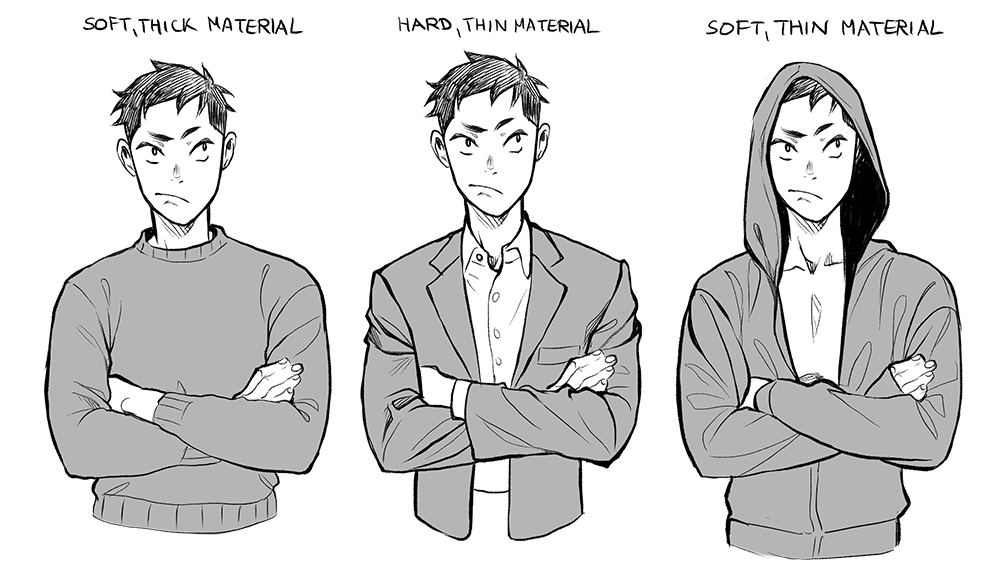
Thicker textile has wider folds that are usually less visible.
Hard materials are usually pulled more at the bending area or at the seams.
Soft and sparse textile produces the virtually folds, especially around the bending areas.
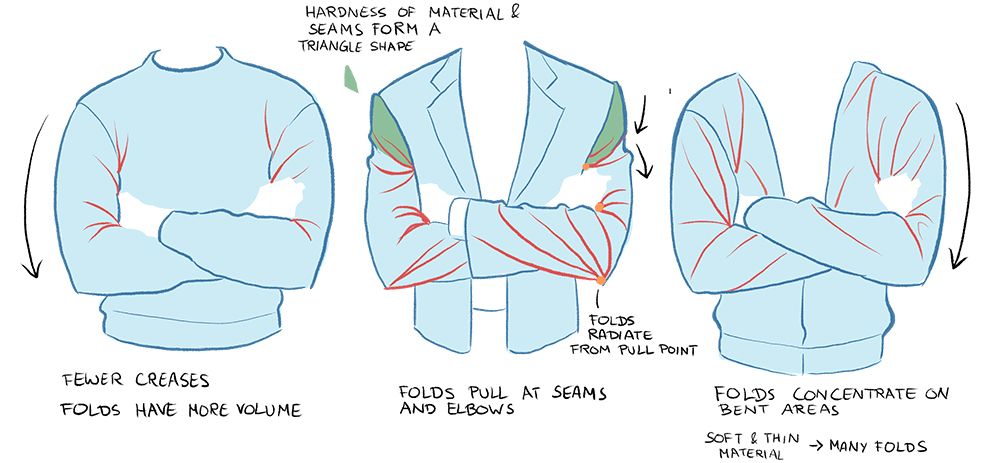
The amount of folds also depends on how heavy the material is and what kind of material it is fabricated of. When drawing fabric it is a skillful thought to consider how thick/thin, hard/soft, heavy/light and shine/textured the material is first.
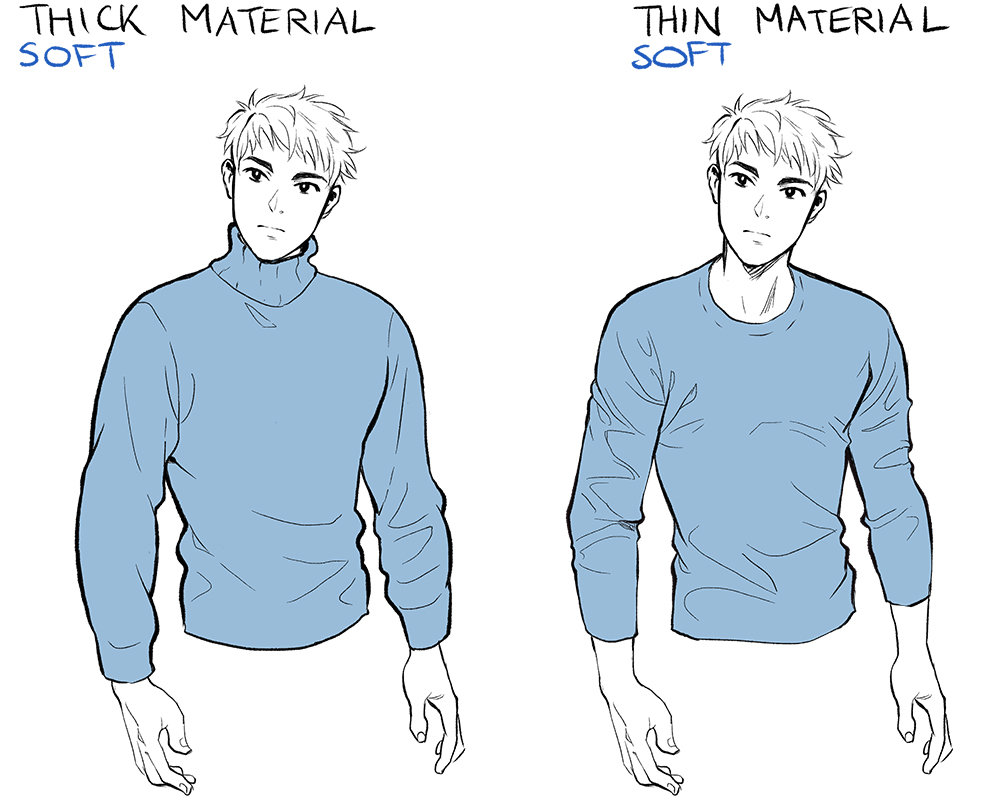
Heavy textile causes folds of a different book and unlike width. Information technology is also more idle and shows fewer folds fifty-fifty when moving.
All clothes have their own arrangement of parts, which heavily influences the germination of folds.
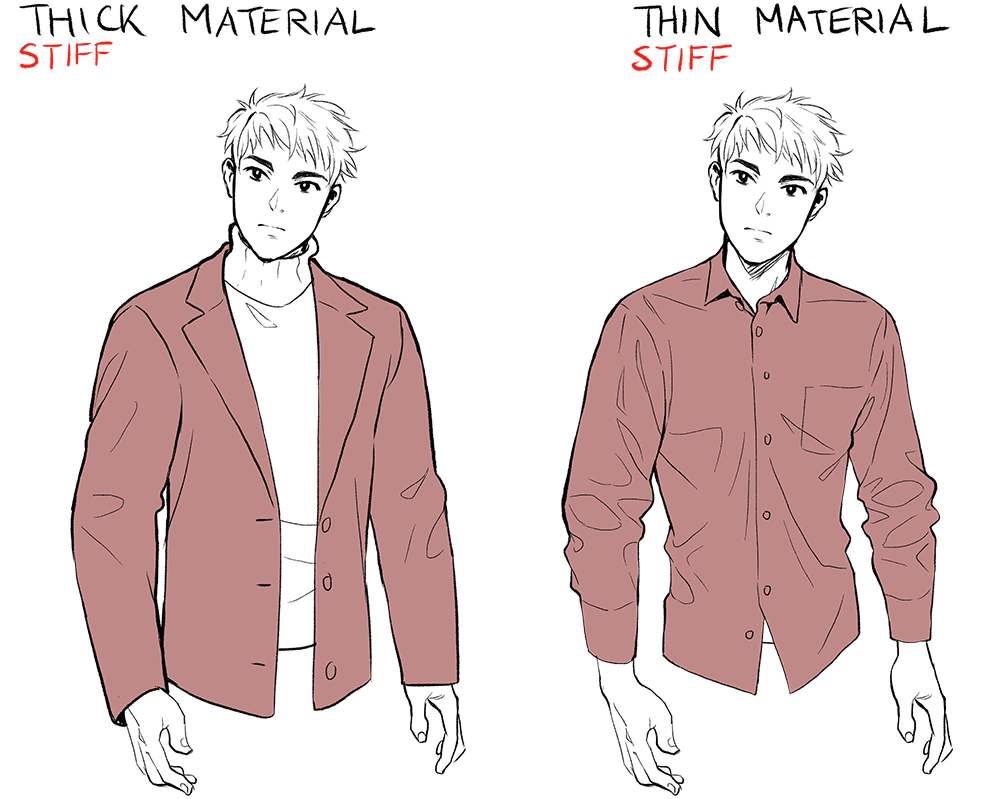
Information technology's good to familiarise yourself with mutual placements of seams. You don't need to describe them all, but it is improve to have a good key noesis of the structure.
Folds tend to pull at prominent seams, particularly on dress like suits where the transition between seams is quite noticeable at the shoulder.
Sweaters usually have their arm seams much lower and the folds don't pull at them as much.
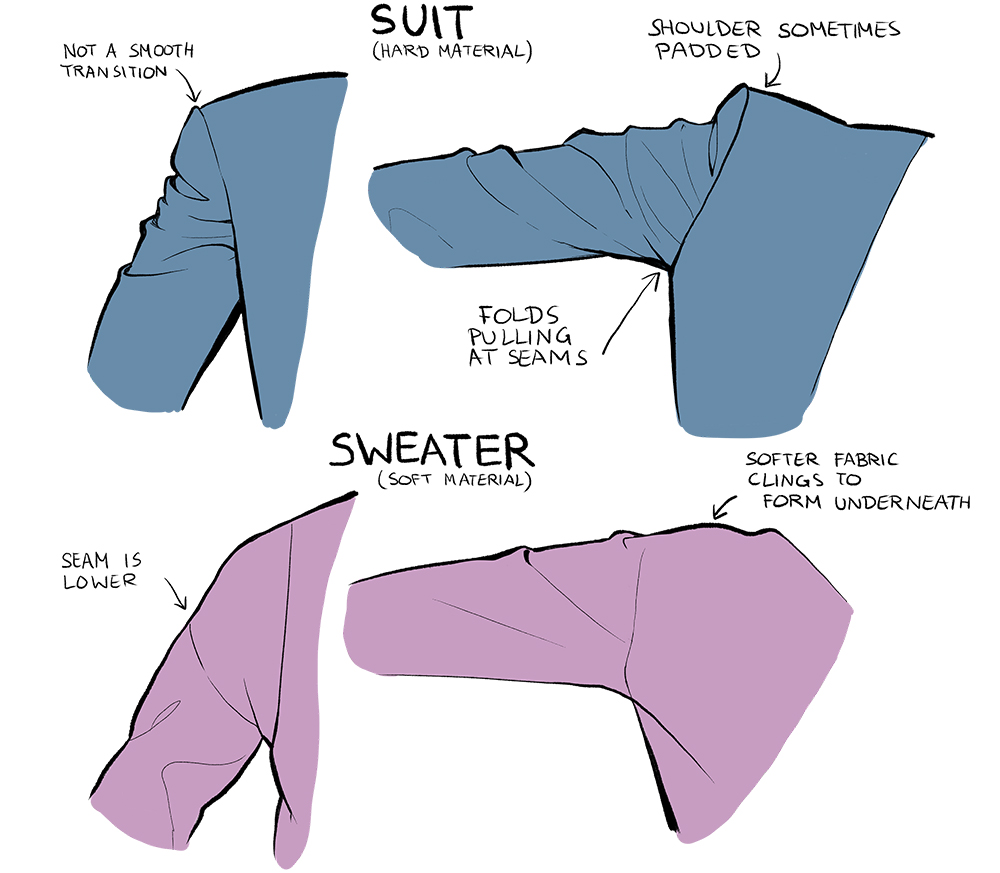
Clothes with a broad cut show different folds than clothes with a narrow cut. A tight cutting follows the class of the body and wraps around it. Wide clothes evidence a lot of droopy folds that go from the pulling point towards the ground.
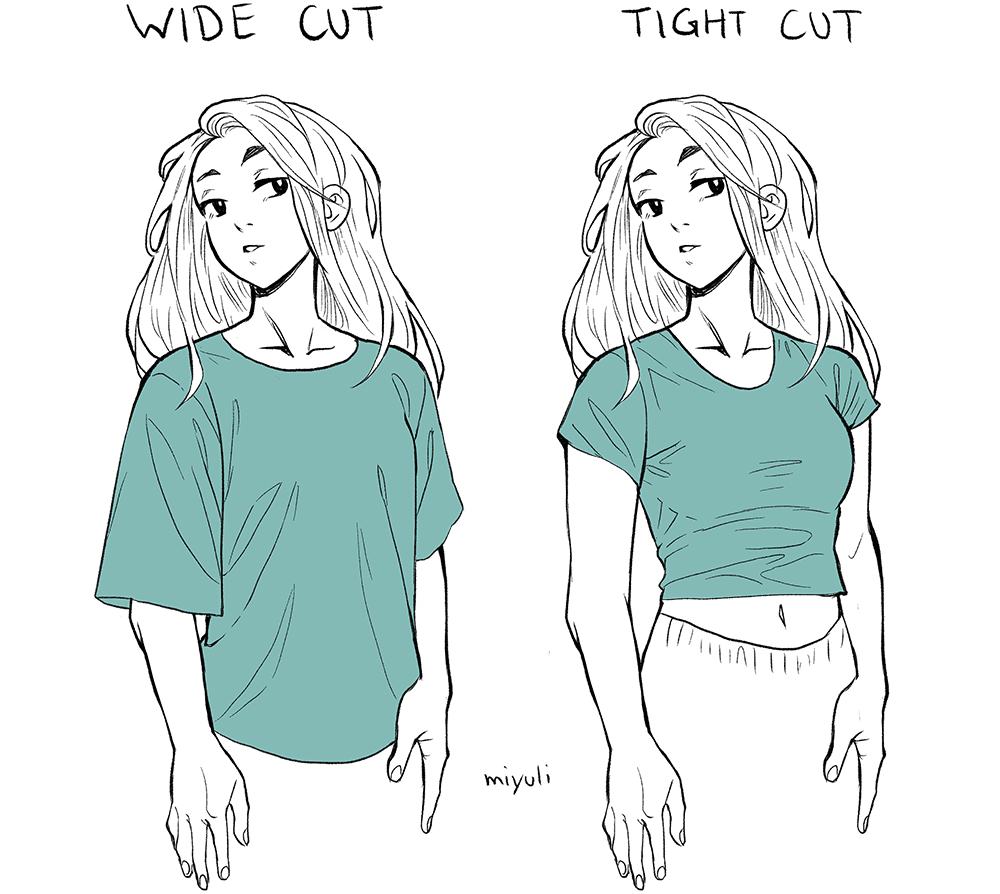
Clothes are often designed with folds or lack thereof in listen.
Fitted material is designed to look elegant with every bit few folds as possible. When clothes are too tight or too loose in that location are more than folds that give a less elegant appearance of the wearable, especially when looking at the silhouette.
Worn-out fabric tends to pucker more than new or well-maintained fabrics.
Notation: When drawing clothes and folds, it can help to consider what material fits the grapheme's personality first.
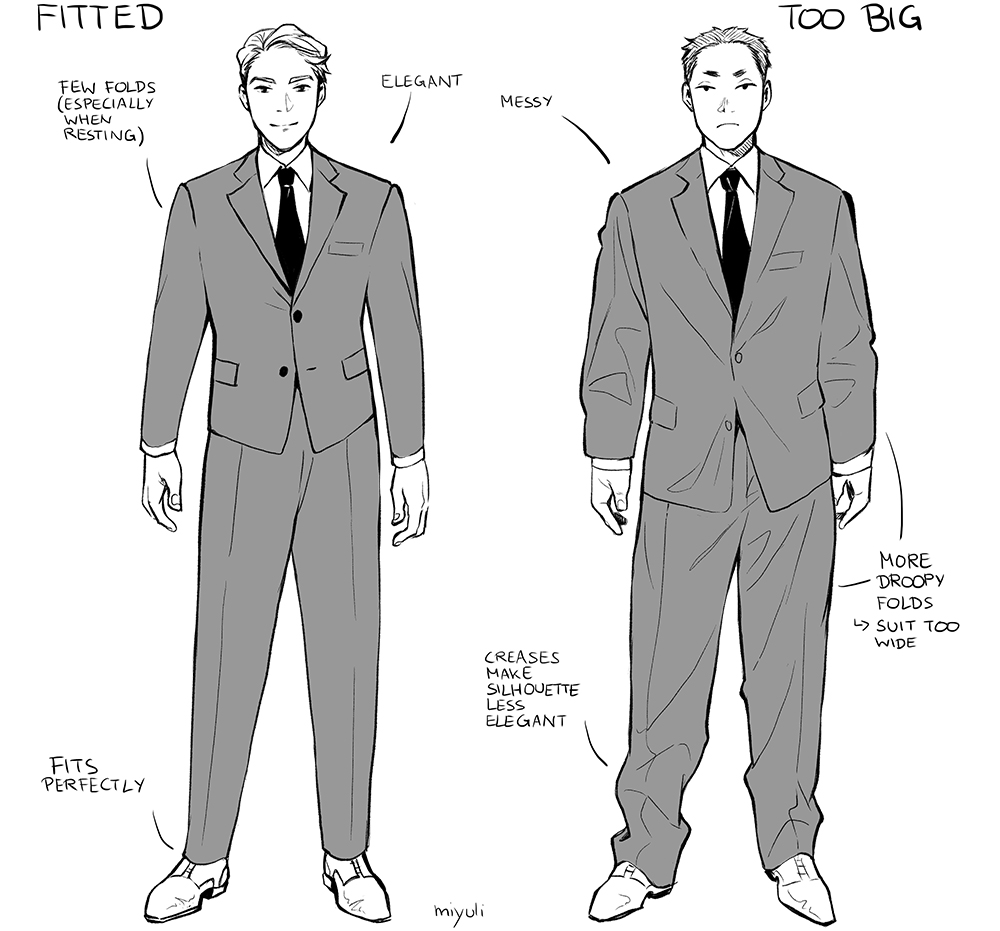
External influences
Folds tin be heavily afflicted by wind or water.
Wet cloth acts differently from dry material. Information technology tends to stick more than to the form underneath. The water makes the light material a lot heavier, so it does not move as easily anymore. Thin fabric becomes see-through.
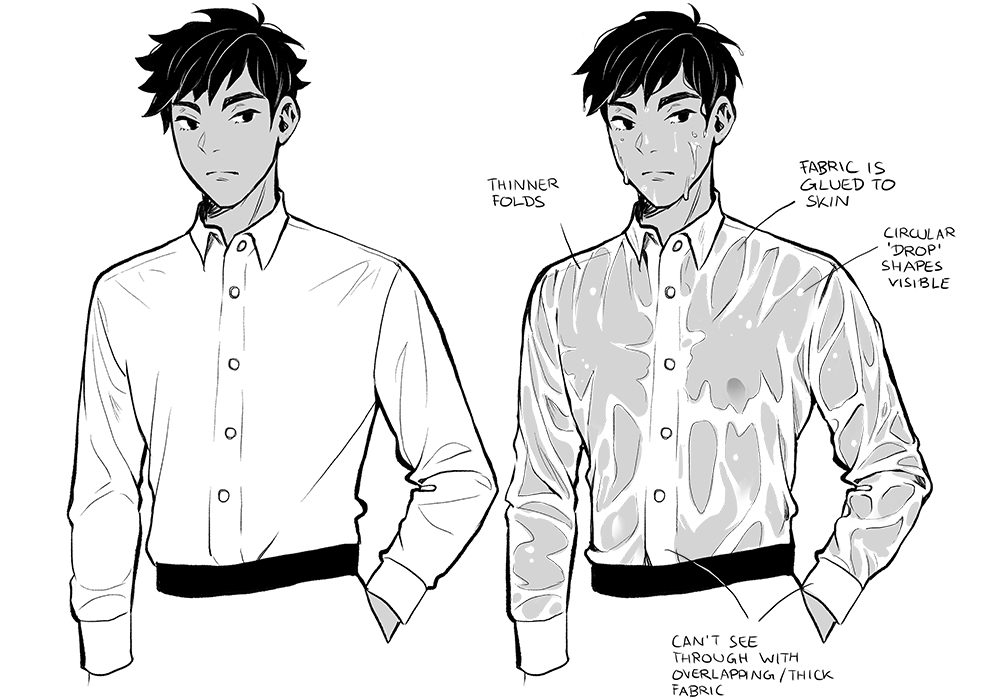
Movement
When the trunk is resting the fabric is normally dragged downwards by gravity. More prominent droopy folds appear the wider and lighter the material is.
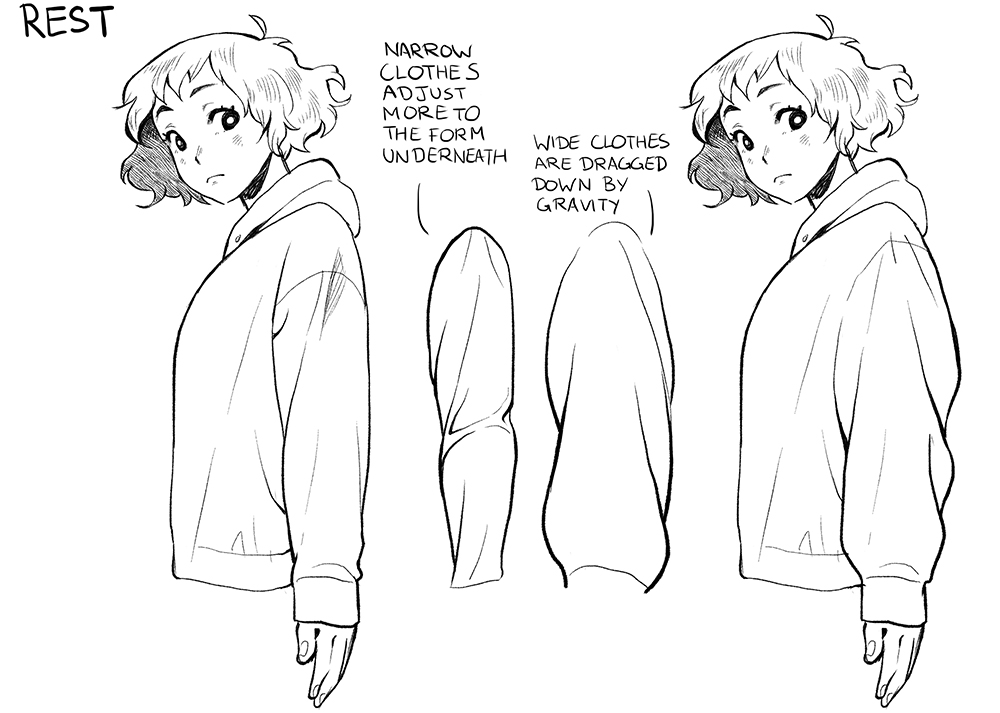
When aptitude the fabric is pressed together and creates hollow shapes that vary in size.
There are more than bumps with more than narrow textile. Wide material tends to squish together with fewer folds.
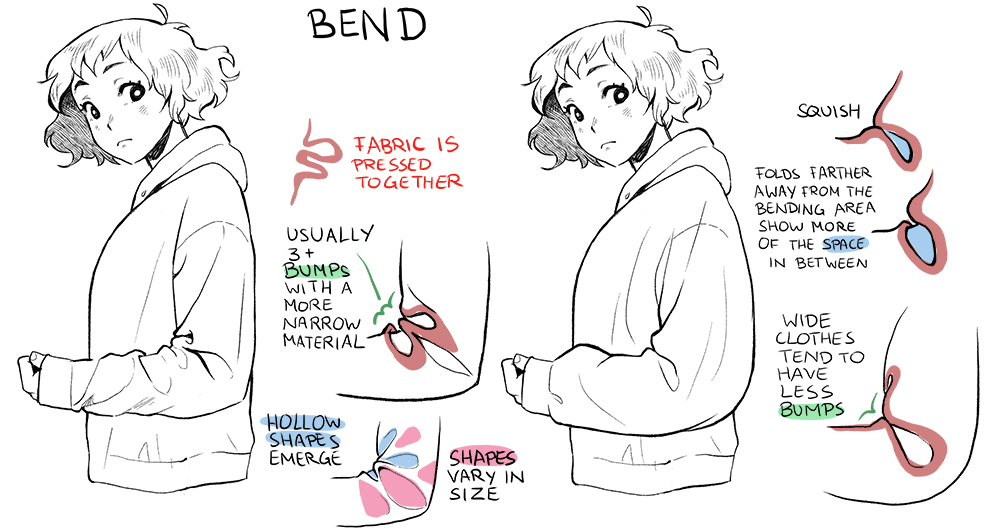
The textile adapts to the forms' movement. Folds usually follow the twist. Information technology can exist very helpful to emphasize the movements.
Annotation that the lighter and thinner textile in the example above shows fewer folds since the arm is still mostly resting.
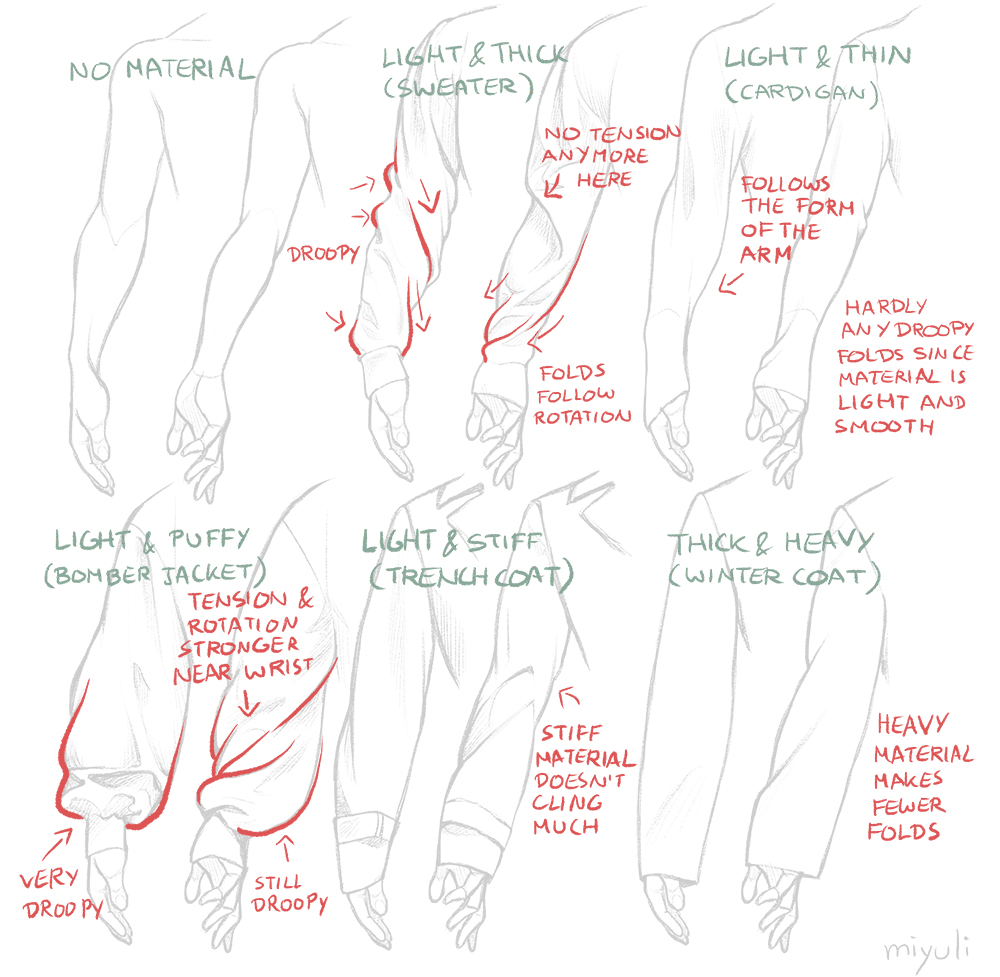
The arms heavily dictate the pulling areas where folds sally.
Opening a jacket absorbs some of the pulling when the artillery are raised.
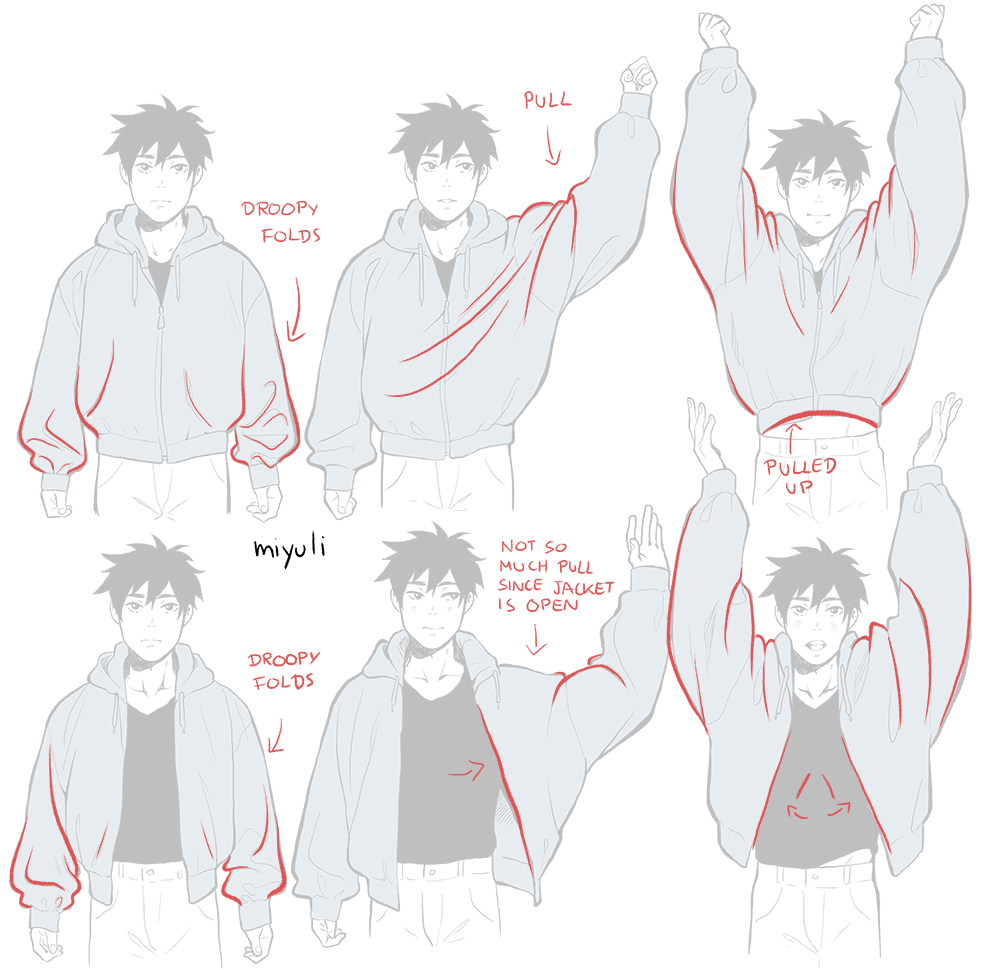
Pants
The fabric of the pants is supported at the waistline.
Pants start wider and narrow down to the knees because they adjust to the bone construction of the legs.
With narrow pants, creases are usually visible at the knees.
When drawing bumps in the fabric it'due south good to show their origin and volume. Information technology does make a visual difference when you tin imagine the folds in a 3-dimensional space.
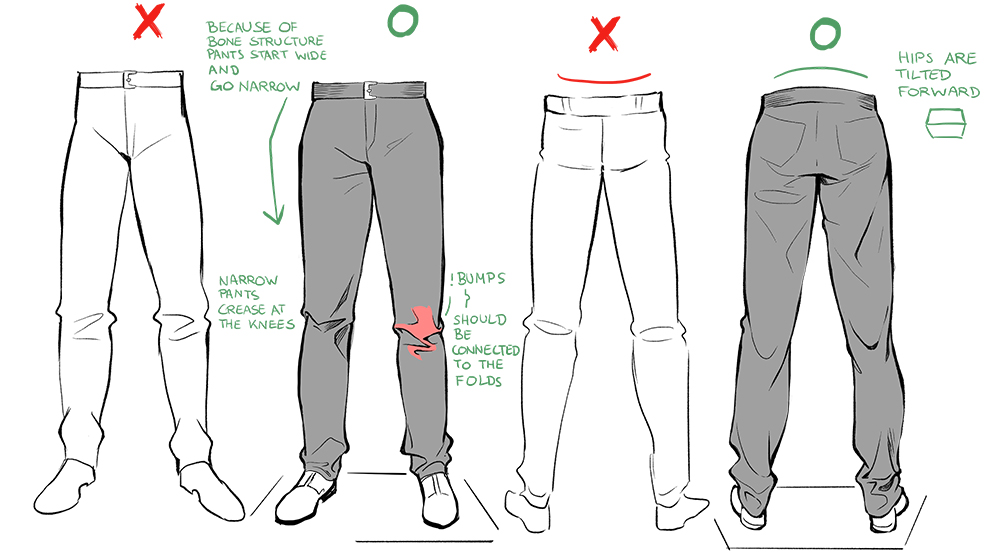
From the back, you can see folds forming under the butt region that go up to the hip.
The folds at the knees are besides visibly pulled by the hips from the dorsum view.
In general, when the trunk is just standing and resting, there are less dynamic folds.
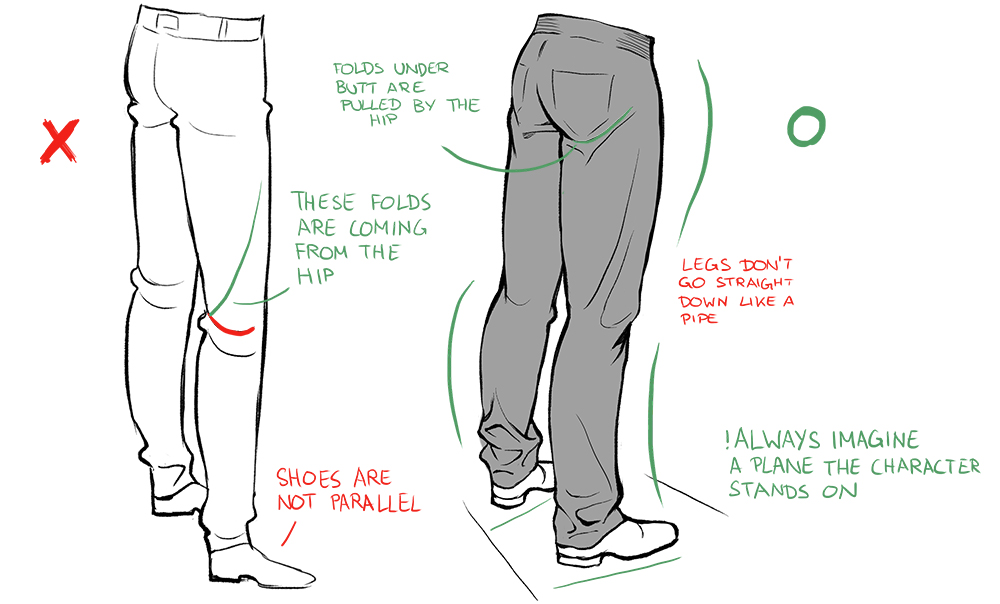
When a leg is lifted, the knee becomes the strongest pulling betoken.
Be careful of the forms that the pant legs create when the leg moves.
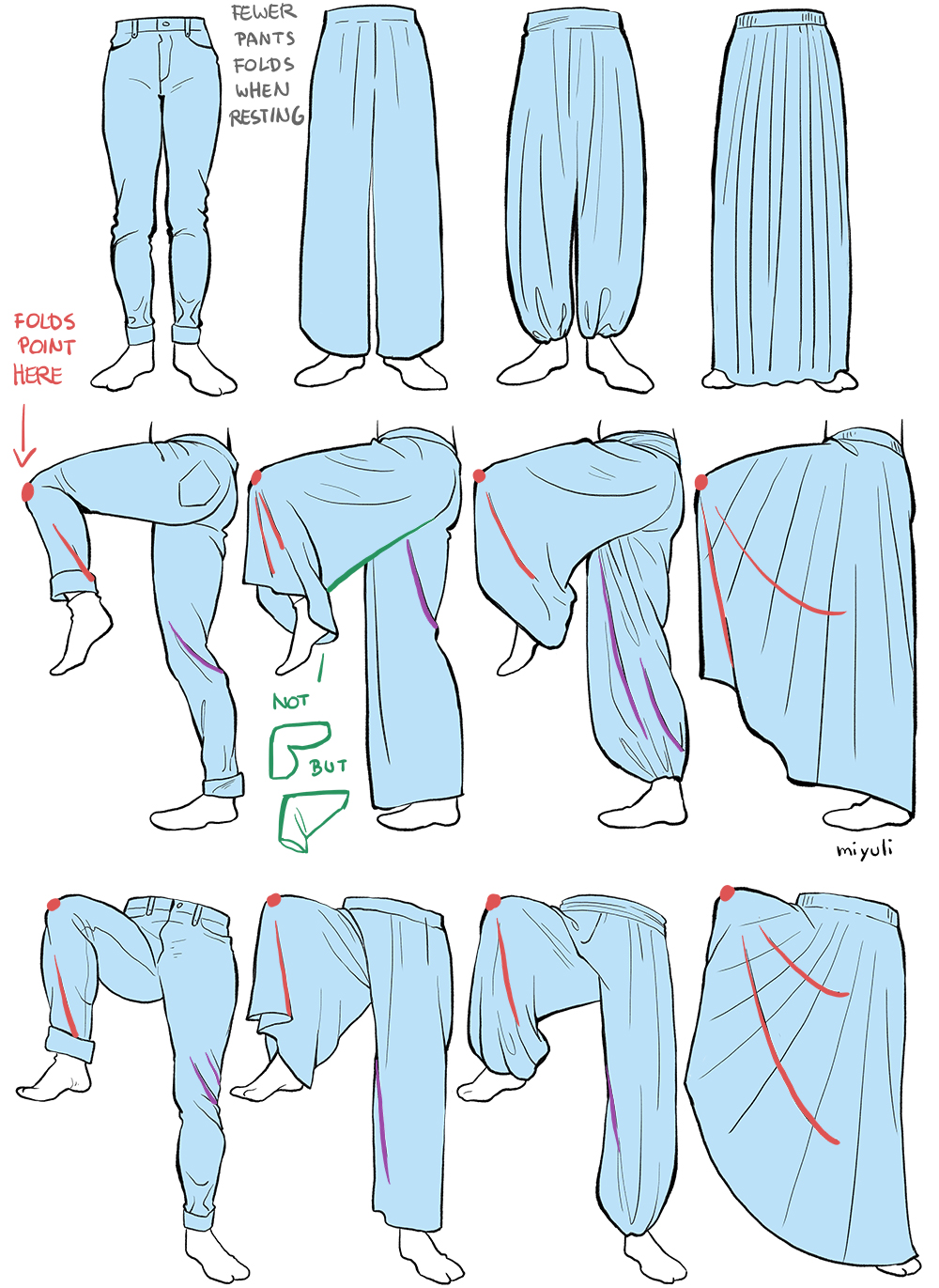
Shadows and Highlights
Depending on the thickness of the material the shadows around the folds appear slightly dissimilar.
When shading folds, it's good to use a combination of soft and hard edges.
When painting pay attention to how smooth and soft the material is. The smoother it is, the more than information technology reflects light and has a brighter highlight. Rougher and more textured materials diffuse lite.
The darkest area is normally where forms are pressed together and an occlusion shadow appears. This as well applies to very deep creases where light does non reach.
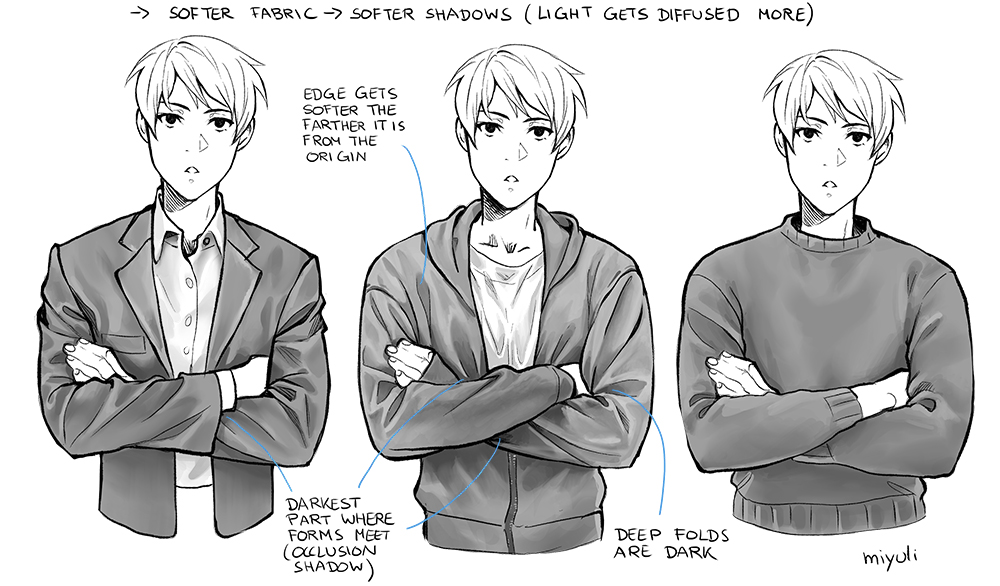
Here are some quick tips that I noticed while shading materials.

The shading, like the width of the folds, varies betwixt soft edges or highlights depending on the fabric, so information technology's skillful to familiarise yourself with as many materials as possible to build upward a rich visual library.
Source: https://www.clipstudio.net/how-to-draw/archives/157926
Posted by: ryanreephy.blogspot.com


0 Response to "How To Draw Clothes Step By Step"
Post a Comment